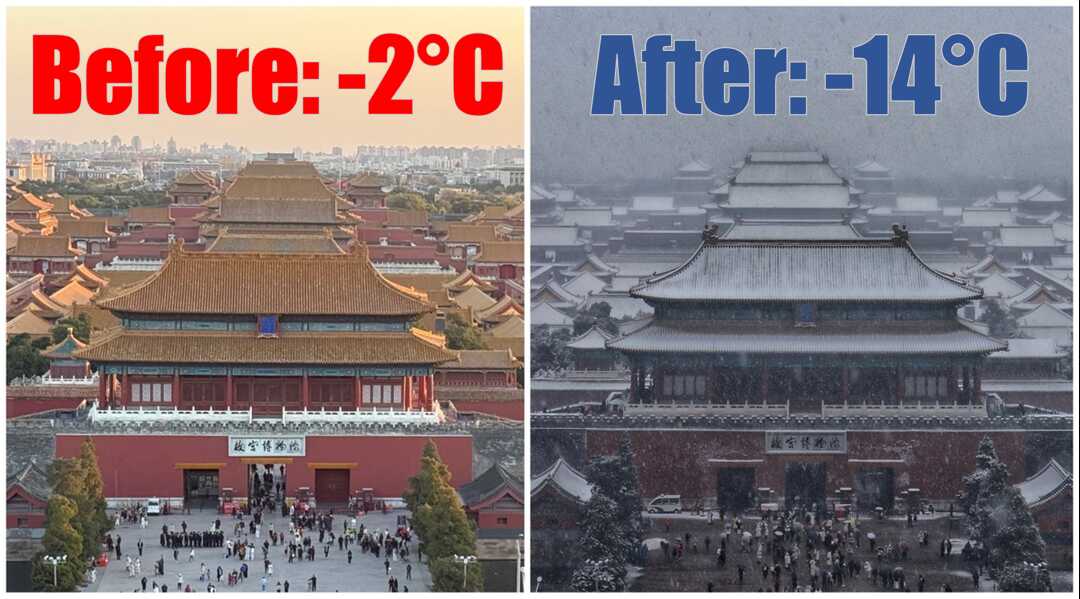Novel “Flash-Cold” Metric Unveils China's December 2023 Weather Whiplash
Date:2024-12-27
In December 2023, a severe cold wave hit China, marking a striking phase of a “weather whiplash” event—where temperatures flip dramatically between extreme warmth and cold.
“Traditional methods struggle to capture the details of such rapid changes,” said CHEN Huayu, a master programme student at the Institute of Atmospheric Physics, Chinese Academy of Sciences. To address this, Chen and collaborators developed the “flash-cold” metric, a novel index to identify and capture sharp, sudden drops in surface air temperature.
Using this metric, they broke down the December event into four distinct stages: warm, first flash-cold, warm again, and second flash-cold. Backward tracing of air parcel trajectories shows that high-latitude atmospheric blocking systems caused both flash-cold phases by directing cold air southward.

Illustration of weather whiplash, indicating the average temperature in China before and after the event. (photographed by XUE Ziyue and ZI Peng at The Palace Museum in Beijing)
Their findings are published in Environmental Research Letters.
“The blocking systems in December developed against a climate backdrop marked by the weakest meridional potential vorticity gradient recorded since 1979,” noted Prof. LIU Yimin, the study's corresponding author. "I hope our study could provide a fresh perspective on weather whiplash events and their connection to a changing climate, offering valuable insights to enhance prediction and projection for similar occurrences in the future."
